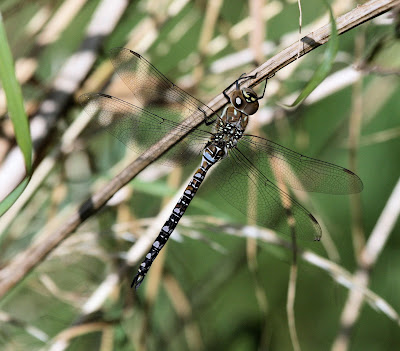Monday, 24 September 2012
Migrant Hawkers
Saturday afternoon provided quite good dragonfly viewing conditions, despite the clear cold start to the day. Warm sunny weather in Autumn can produce good dragonfly watching especially for species like migrant hawker, southern hawker, common darter and black darter, which certainly persist longer into the season than many of the other species in the North/East Yorkshire region. September is usually good for photography as the temperature is slightly cooler making these insects slightly less active. Dragonflies are largely dependent on direct sunlight to warm themselves up, making sunny weather critical for good watching conditions, usually around 9.30-10am onwards, on clear still September days. Every year around late summer/early autumn large numbers of migrant hawkers appear on the coast, some of which will undoubtedly be from local breeding populations, others wandering migrants.
Male Migrant Hawker
Migrant hawkers appear to bask low down in vegetation more frequently in comparison to the large southern hawker and brown hawker, which both appear to prefer trees and shrubs. This male was found on the sunny sheltered side of some scrub, approximately 30cm from ground level. This species appears to have done well in recent years, with a notable northwards expansion of the breeding range. It now appears to be well established within the North/East Yorkshire region with breeding occurring up to the southern escarpments of the North York Moors, where it is largely absent as a breeder due to its intolerance of acidic water, more populations exist further north. The larvae appear unable to stand low summer temperatures, which influences its distribution as a breeding species. This is due to it requiring a warm summer period in which they can rapidly develop into adults (in only a few months), this strategy is dissimilar to other British Aeshnids which take longer to mature. In addition to a breeding population, we also get migrants to Britain, from the continent each year, especially in late summer and autumn.
Subscribe to:
Post Comments (Atom)


No comments:
Post a Comment